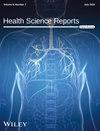Neutrophil-to-Lymphocyte Ratio Predicts Dialysis Timing & Prognosis in Critically Ill Patients
Abstract
Background and Aims
The neutrophil-to-lymphocyte ratio (NLR) is a cost-effective indicator of inflammation, which may impact decisions regarding therapy for patients undergoing continuous renal replacement therapy (CRRT), even with ongoing clinical arguments. This study aimed to examine the correlation between NLR and the prognosis of critically ill patients undergoing CRRT, specifically about mortality and morbidity. Additionally, the study sought to assess NLR's potential as a prognostic indicator for CRRT initiation.
Methods
Data were retrospectively analyzed from 175 critically ill patients who received CRRT. Clinical factors and biochemical markers were compared between survivors and non-survivors at admission, before CRRT, and at 24 and 72 h post-CRRT initiation.
Results
Elevated NLR levels were significantly associated with increased in-hospital mortality. Neutrophil counts showed statistical significance across all measurement points, while NLR and lymphocyte counts were significant only on the third day of CRRT (p 0.001 and 0.011, respectively). Non-survivors had higher NLR values than survivors and experienced shorter hospital stays (median 22 vs. 44 days for survivors, p < 0.001). Patients with higher baseline NLR values also had more complications.
Conclusions
The NLR shows potential as a prognostic predictor for mortality in CRRT patients. Its integration into clinical practice could enhance patient care and treatment timing, and further studies should validate its clinical utility.


 求助内容:
求助内容: 应助结果提醒方式:
应助结果提醒方式:


